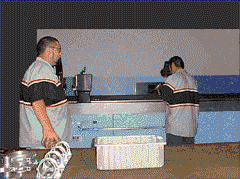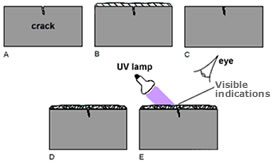Non Destructive Testing or NDT is the most popular way of inspecting the conditions of different materials, systems or components in various industries for instance manufacturing, automotive, construction, aviation, engineering and railways. Among the benefits of this testing is that it does not affects the material in any way. NDT is a very valuable method for the engineering industries as it not only not only makes material defect free, but results in saving time which otherwise will be spend on troubleshooting, evaluation, and research.
Among the most used NDT testing methods are given below:
Ultrasonic testing:
In ultrasound method, ultrasound radiations are used for the examining of the components. These radiations are presented into the material through the transducer. Ultra violet radiations are known for traveling in a directly range with a consistent rate and get proven when something blocks their direction like some problems on the outer lining area. The transducer transforms this proven problem in an electric indication, which later on is fed into an analytic system. The outcomes proven by this system allows in discovering the defect. Through ultrasound examining, you can identify even the moment blemishes of any material.
Magnetic-particle inspection:
 Magnetic examination is very useful if you want to identify the outer lining area and near surface problems of ferromagnetic components. In this technique, excellent attractive contaminants are propagating over the outer lining area of the material or pipe that is being examined. The material being tested is also magnetized. The attractive contaminants gathers at a discontinuity like a break, lap, addition or joint.
Magnetic examination is very useful if you want to identify the outer lining area and near surface problems of ferromagnetic components. In this technique, excellent attractive contaminants are propagating over the outer lining area of the material or pipe that is being examined. The material being tested is also magnetized. The attractive contaminants gathers at a discontinuity like a break, lap, addition or joint.
Liquid Penetrant Inspection:
Liquid Penetrant Inspection (LPI or PT) is very efficient in recognition of the faults like exhaustion, satisfy or crushing breaks and is mostly used to get the problems in materials, cup, plastic materials and shot ceramics. However, Fluid Penetrant Inspection can only be used for the discovering faults in components, which are not incredibly difficult or permeable. It is a useful Non-Destructive Inspection of surface examination, which can be used discovering faults in areas of almost any form.
Radiographic testing:
Radiographic Testing (RT) is used for analyzing invisible faults of any material. In this technique, brief wavelength electro-magnetic rays are presented in the material to be checked and quantity of the rays, which comes from the other part of it, is calculated.
Eddy-current testing:
Eddy-current examining is used to identify the problems in the conductive components through electro-magnetic radiations. It is used to get out the minimal breaks on the outer lining area of the content.
Therefore, if you would keep all these issues in thoughts while selecting the best organization for Non-Destructive Inspection then only it would be a successful for you. Magnetic Particle Inspection done by a right organization would provide you with a brief review on what you are doing right and where you are going incorrect. This way you would be able to pat yourself on the returning for doing some factors right and enhance the factors, which you are doing incorrect. Thus regardless of what the outcomes of the Non-Destructive Inspection may be you should be ready to take it in the right way otherwise the whole process of getting this process done may go in the wrong direction.


 Liquid penetrant Inspection
Liquid penetrant Inspection